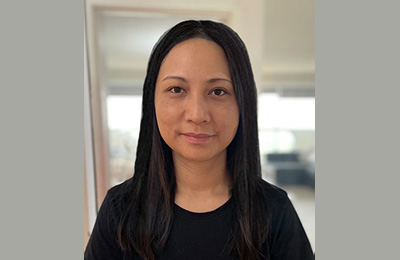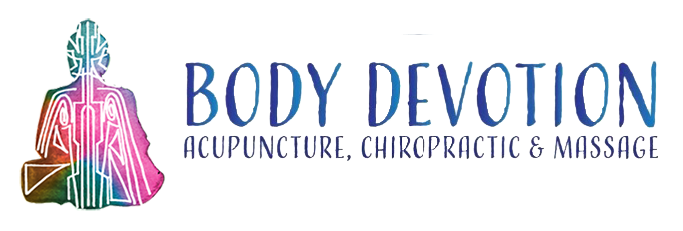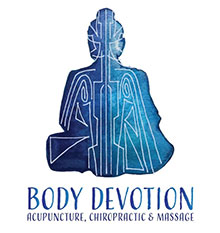Our Location: 11528 Jasper Ave. Edmonton, AB T5K0M8 (In the COSMEDICS Medical Bldg.) View on Google Maps
Therapeutic Massage: Healing, Wellness, and Relaxation

Massage Therapy
Massage combines the power of touch with an understanding of the body's anatomy. It involves the skilled manipulation of soft tissues and joints. Through a variety of techniques and pressures, our experienced massage therapists work to alleviate pain, reduce stress, and promote relaxation.
Massage Therapy is defined as “the assessment of the soft tissue and joints of the body and the treatment and prevention of physical dysfunction and pain of the soft tissue and joints by manipulation to develop, maintain, rehabilitate or augment physical function, or relieve pain.”
By promoting improved blood circulation, reducing muscle tension, and enhancing overall relaxation, massage therapy plays a pivotal role in aiding the body's natural healing mechanisms and assisting individuals in their journey towards better health and well-being.
Benefits of Massage
The benefits of massage therapy are extensive, including:
Pain Relief: Massage can alleviate chronic pain, muscle soreness, and tension.
Stress Reduction: It is known for its ability to reduce stress, anxiety, and promote relaxation.
Improved Circulation: Massage enhances blood flow, aiding in the delivery of oxygen and nutrients to tissues.
Enhanced Range of Motion: It can improve flexibility and mobility.
Emotional Well-being: Massage therapy can boost mood and alleviate symptoms of depression.
At its core, massage therapy is both an art and a science. The artistry comes from the therapist's intuitive touch and the ability to customize each session to your unique needs. The science lies in the profound physiological and psychological effects of this practice.
Massage Therapy FAQ
Massage therapy works by targeting specific areas of tension or discomfort. The (RMT) registered massage therapist’s hands and fingers, or even specialized tools, are used to knead, stretch, and apply pressure to release tight muscles and stimulate blood flow. This promotes the body’s natural healing processes and encourages the release of tension and stress.
During a massage therapy session, here’s what you can typically expect:
1. Consultation: Your session will begin with a brief consultation with your massage therapist. They will ask you about your health history, any specific concerns or goals for the session, and preferences for pressure and areas to focus on.
2. Privacy and Comfort: Following the consultation, your massage therapist will step out of the treatment room, allowing you the privacy and time to undress to your comfort level. You’ll then lie on the massage table, comfortably covered with sheets. Your therapist will return to the room when you’re ready to begin the session. You will be covered at all times, and only the areas being actively worked on will be exposed. Draping is a standard practice in massage therapy to maintain your privacy and comfort, creating a safe and professional environment.
3. Technique Variety: Your therapist will use various massage techniques, such as Swedish, deep tissue, or specialized modalities, depending on your needs and goals. They will employ their expertise to address areas of tension and promote relaxation.
4. Communication: Open communication with your therapist is encouraged. You can share any discomfort or preference adjustments at any time during the session.
5. After the massage, your therapist will offer post-massage guidance, such as stretching or hydration recommendations. They may also discuss a treatment plan with you if you’re seeking ongoing massage therapy.
Each massage session is tailored to your unique needs, and your therapist is dedicated to creating a safe, calming, and healing experience throughout your visit.
The frequency of massage therapy sessions can vary depending on individual needs, personal preferences and budget, and the specific recommendations of your registered massage therapist. However, here are some general guidelines:
For General Wellness and Stress Relief: Some individuals choose to schedule regular massage sessions for general well-being and relaxation. This can range from once a month to every few months.
Injury Rehabilitation: If you’re seeking massage therapy to address a specific injury or condition, your RMT will create a treatment plan tailored to your needs. This may involve more frequent sessions initially, followed by a reduction in frequency as you progress.
Regular Massage Therapy for different Professions: Various work-related conditions can impact your body. For example, for office workers, long hours at a desk can lead to muscle tension, and posture-related issues. Regular monthly or bi-monthly massages can help relieve these tensions, reduce the risk of physical conditions and improve overall well-being. On the other hand, individuals who work in jobs that require standing or walking for extended periods, such as retail or healthcare professionals, may benefit from massage therapy on a bi-weekly or monthly basis. This can help reduce leg and foot fatigue, alleviate lower back pain, and improve circulation. People engaged in physically demanding jobs, like construction workers or warehouse employees, may experience muscle strain and overuse injuries. For preventive care and relief from muscle soreness, a massage every 2 to 4 weeks may be suitable. Your massage therapist can tailor the frequency to your specific needs and lifestyle, ensuring you experience the most significant benefits.
Chronic Conditions: If you have a chronic condition, such as chronic pain, fibromyalgia, or arthritis, your registered massage therapist (RMT) may recommend more regular sessions to help manage symptoms. This could be weekly or bi-weekly, with adjustments based on your response to treatment.
Prenatal and Postnatal Care: Pregnant individuals may benefit from regular prenatal massage throughout their pregnancy, with sessions scheduled based on individual comfort and needs. Postnatal massage can also be beneficial in the weeks following childbirth.
Generally, you can book a massage whenever you want, regardless of whether you experience any symptoms or not. However, we recommend checking with your insurance carrier to see if they require a prescription to cover your treatment.
At Bodydevotion, we are happy to provide you with direct billing for your massage therapy appointments. To view the list of insurers that we can bill directly, please visit: → Direct Billing
Our Massage Therapists

Erin Doblanko, R.M.T
With four years of experience practicing massage therapy in Toronto, Erin is excited to bring her expertise back to Edmonton, where she focuses on creating a comfortable and connected experience for every client.
Her treatments are goal-oriented, adjusting pressure and focus areas based on each client’s specific needs, all while ensuring they feel at ease on the table. Working from a foundation of Swedish massage, she aims to alleviate tension, pain, and injury through targeted work, while also addressing the body holistically. Incorporating breathwork and relaxation techniques into sessions, as well as drawing on her background in office work and long-distance running to treat both postural issues and the needs of active individuals.
She's passionate about developing home care plans that are both practical and tailored to clients’ lifestyles, empowering them to build self-care habits that last. For her, it’s not just about the session—it’s about supporting clients on their wellness journey and helping them make meaningful changes that support their overall health.

Dr. Holly (Ying ) Deng D.Ac , R.M.T
Holly comes from a long line of TCM doctors. She is very passionate about traditional Chinese medicine and helping others. She specializes in treating women’s health, gynecology, mental health, and musculoskeletal issues.
Her treatment style is diverse including many disciplines such as acupuncture, cupping , gua sha , massage and herbology.
She is very kind and professional.
An effective and gentle massage therapist and acupuncturist.

Lace (Joanne) Imson, R.M.T
Lace specializes in massage treatments for pain and tension relief, stress and anxiety reduction, and rehabilitation and injury recovery.
Whether you’re experiencing chronic pain in the neck, back, and shoulders from prolonged sitting, or repetitive stress injury from physically demanding work, she can provide massage therapy to address your needs.
Her treatments aim to reduce pain and discomfort, promote healing and relaxation, restore mobility, and enhance overall well-being. She can apply a range of pressure techniques, adapting to your preferences and therapeutic requirements.
Lace has over 5 years of experience in Massage therapy. She is very detailed, intuitive and attentive. Her calming and quiet countenance allows you to feel very safe, and comfortable on her table.

Lisa Chan, R.M.T
Lisa specializes in deep tissue massage and fascial work. With a combination of deep pressure and Rapid Neurofascia techniques, she’ll have you up and running again in no time.
Lisa is a deep pressure specialist. You will feel better but need to go through a little bit of the pain. She does some pain and stretch some tendon flexion and myofascial release around tendons and joints.
She’s really good at delivering painful releases quickly and has a great sense of humour to distract you.
She loves to handle all sorts of problems and will do her best to give you the best personalized care.
She's also trained in TMJ/Intra-oral massage techniques.
She is a very talented Practitioner, very good at assessing the muscle imbalances in your body. Accurately understands exactly what muscles and tendons need to be worked on and released. It may hurt but you will feel so much better after.
Clinic Hours
Our in-clinic hours of operation are:
Monday to Friday: 10 am - 8 pm
Saturday & Sunday: 10 am - 6 pm
Please not that we are available in clinic by appointment only.
Office Hours:
Monday, Tuesday, Friday, Saturday: 10 am - 3 pm
Wednesday & Thursday: 10 am - 6 pm
*To reach the office or clinic after hours, weekends or for urgent requests. Please text 780-246-0682. *
Location:
11528 Jasper Ave., Edmonton, AB
T5K0M8
📍View on Google Maps
Contact:
Phone: Call or Text to book, change or cancel: 780-246-0682
Email: info@bodydevotion.com
** Please note that we do NOT accept late cancel or last minute requests by social media Or Email messaging. You must reach us on the main line by call or text.
• Copyright © 2024 BodyDevotion Edmonton • Acupuncture, Massage Therapy, Chiropractic • First Media •

